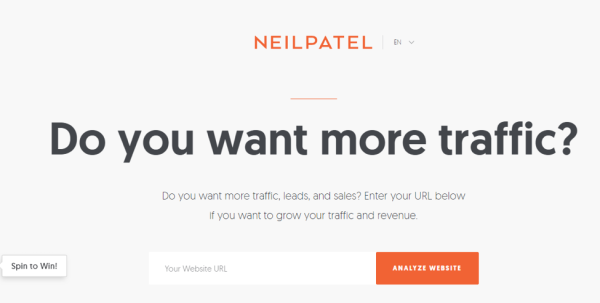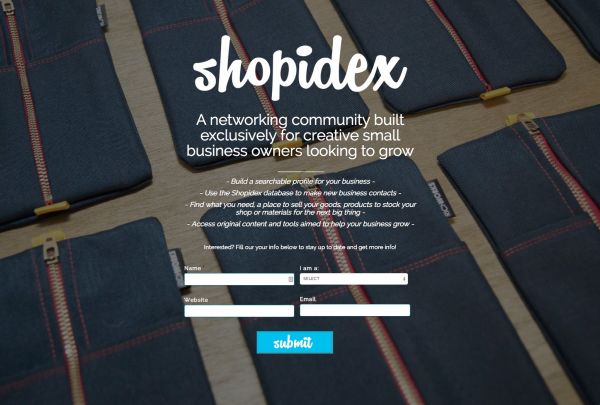In the world of marketing, there are a whole host of tactics you can use to generate leads for your website. One of the most popular and effective ways to bring more customers to your website involves setting up a landing page.
A landing page is a place on your website (sometimes another, standalone webpage) that encourages readers to get more information about your product or service (in fact, as you scroll to the bottom of this blog post, you’ll be greeted by a landing page encouraging you to sign up for our weekly blog newsletter). There are plenty of ways to design and create your own landing page. However, if you want to generate leads, you’re going to need to pay attention and curate specific parts of your page.
In this blog post, we’ll take a look at 7 practices you can start using today to improve the quality of your landing page and bring in more potential customers.
1. Have a clear goal
Before you type out the first word of your landing page copy, you should figure out what you’re going to offer to the reader. Normally, there are two approaches you can take to generating leads using this method.
The first and most common goal is to have a reader sign up for a free item of some sort. Plenty of businesses like to offer free ebooks, access to exclusive webinars, checklists, or exclusive, gated content in exchange for the email address of the lead.
Alternatively, if you have a specific product or service you wish to sell, you can link that product to your landing page. The end result of the free gift is to obtain a sale, but depending on your niche, a free ebook may not be a possibility.
If you start developing your landing page with your primary goal at top-of-mind, you’ll have a much easier time creating content for your page.
2.Create a catchy and helpful headline
Developing a high-quality headline is also important to consider when creating a landing page. Your headline will show up on a large section of your page and needs to convey a clear message that will resonate with your audience.
Your headline should encourage your readers to see what you have to offer. You can accomplish this by asking a question, offering a solution, pointing out a common problem in your niche, or by offering a gift to improve the lives of your audience in some way.
Here’s a great example of a headline that sparks interest via Neil Patel’s landing page.

The question posed here is simple. “Do you want more traffic?” If you’re a business owner searching for ways to increase your website traffic, this headline is sure to hit home with you and encourage you to act upon its call-to-action (CTA)—in this case, entering your website URL.
3. Clear uncertainty
Unless you’re Amazon, Google, Nordstrom, or any major corporation, it’s highly likely that when someone comes across your website, they won’t know much about you and your business. It’s your job to make this clear to them as soon as possible.
To do this, answer three important questions in your headline and subheadline. Your audience should know the following seconds after the page loads:
- Who you are/the name of your company
- What you’re offering (your lead magnet)
- How the lead magnet benefits them.
4. Have an obvious CTA
The goal of your landing page is to generate more leads, right? When you’re done creating your lead magnet, you must add a clear CTA so the reader knows what you want them to do next.
For example, if you’re giving away a free copy of your ebook, you may want your CTA to read “Claim Your eBook Now.” If you’re hosting a webinar that requires registration you could say “Secure My Spot.” The possibilities are endless.
Here’s an example landing page with a CTA that really drives the message home:

At a glance, it’s obvious that the goal of this landing page is to “Register Now.” The bright orange CTA box and the arrows pointing to the register box immediately grab your attention. It’s clear what this business owner is hoping to accomplish by setting this page up.
To help you build better landing pages with opt-in boxes, there are plenty of programs available (like Keap!)
As you can see, if you have a lead magnet to draw in customers, you can use in-page advertising to increase conversions and get more subscribers.
5. Start generating leads early
Another excellent practice to keep in mind is to start generating leads for your product or brand as soon as possible. If you’re in the process of creating your website, you can use a coming soon page builder, such as SeedProd, to develop a simple but effective coming soon landing page.
You can use this page to encourage people who are interested in your product or brand to sign up and get updates on new content and the official launch of the website.
Here’s a coming soon/landing page from Shopidex. Let’s look at a couple of highlights.

At a glance, you can clearly see the name of the website, what they hope to accomplish, and how that will benefit the end user. This is still technically a “coming soon” page, but interested readers can follow the CTA and submit their info in order to get updates about the status of the website.
The only thing we would change is the message in the CTA. The word “submit” works, but something like “Stay informed” or “Keep me updated” might be more effective.
6. Establish a secondary plan
In the event that someone comes to your website but decides not to stick around, you’re going to want to dive in and find out why they decided to not accept your offer. You can use an exit popup or a simple contact form to give readers the option to voice their opinion.
This tactic is useful for many reasons. In the best case scenario, the reader can type into a box and tell you why they are not opting in for your offer. You can look through your analytics data and see what percentage of people decided to decline your offer, then dig through their answers and find out why.
Knowing why someone decided to leave without signing up can help you fine-tune your strategy and develop an offer that provides value to a majority of the people who land on your page. The more insight you gain into their behavior, the better your future campaigns. Which leads us to the last best practice when creating a landing page...
7. Split test often
If you’re happy with the landing page you’ve created and you’re generating tons of leads, awesome! However, that doesn’t mean your job is done.
It’s always a good idea to split test your campaigns with different offers in order to create the most relevant offer for your readers. Sometimes, you’ll find that multiple offers spanning more than one landing page can net you big results.
For example, if you’re doing well with your free ebook landing page, but you notice that there are some people not taking part in the offer because they’re not big readers, perhaps you should consider developing another landing page that gives readers access to a webinar. Visual learners will enjoy the experience of a webinar over an ebook.
Conclusion
As you work to master the art of generating leads, it’s important to keep an open mind and your finger on the pulse of your niche. As you learn what your readers expect from your business, you can fine-tune your landing page marketing strategy to generate more leads than you ever thought possible. But be sure to follow these best practices!
Syed Balkhi is an award-winning entrepreneur and co-founder of OptinMonster, a powerful conversion optimization software. He is also the founder of Awesome Motive the company behind several popular small business software that collectively powers over 3 million websites and serves billions of page views every month.


